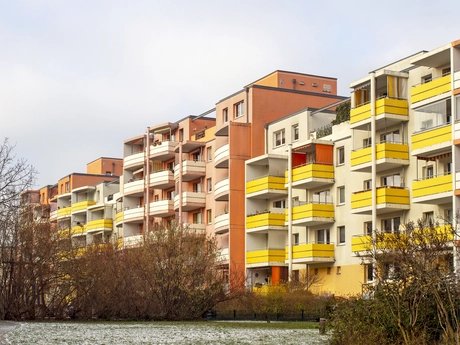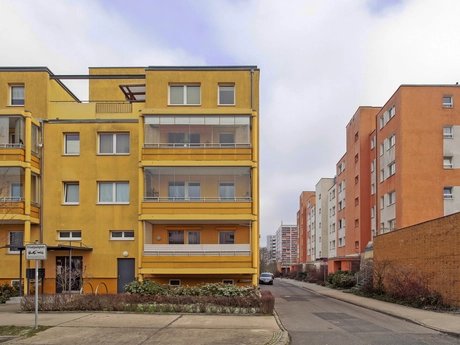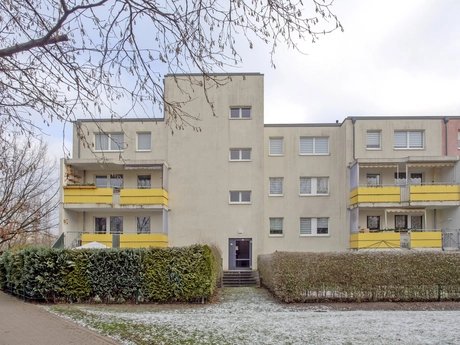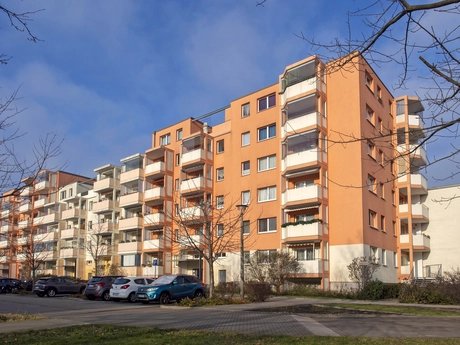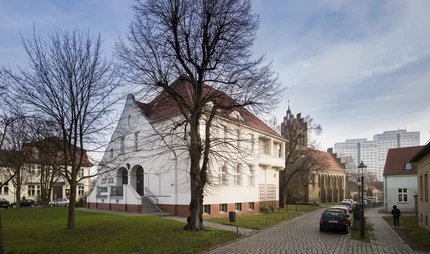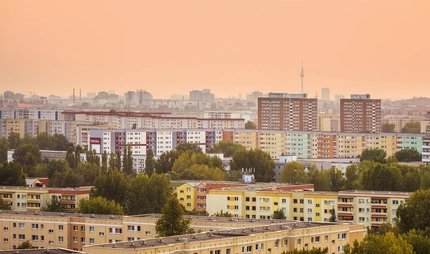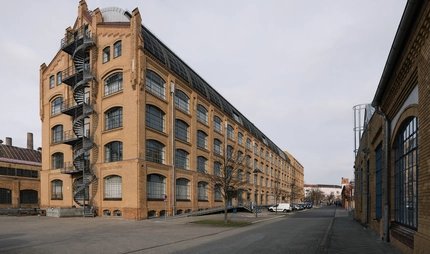
Ahrensfelder Terraces
Mediterranean flair in Marzahn
Today, international urban researchers make pilgrimages to Marzahn to find out more about the sustainable renovation of a prefabricated high-rise building estate.
In Ahrensfelde, at the end of the S-Bahn line 7, the modern architecture holds a surprise in store. Between the high-rise buildings of the large GDR housing estates you will find smaller buildings in warm colours with spacious rooftop terraces: the Ahrensfelder terraces. Green spaces generously pervade the residential area – the visitor almost feels reminded of the classical modernist estates. But the Ahrensfelder terraces are an award-winning urban redevelopment project of the 21st century.
Protests against the demolition
Marzahn emerged in 1979 as a new city district in East Berlin during the course of a GDR new building project. At the time, the building owners attached very little importance to quality and focussed instead on speed. Within a few years, they had erected tens of thousands of prefabricated apartments.
Germany's largest prefabricated high-rise building estate quickly lost its appeal after the German reunification and many residents moved to other districts. Around the turn of the millennium, the municipal housing company Degewo recorded a vacancy rate of roughly 30 percent. The situation was particularly grim in Ahrensfelde, in the north of Marzahn. Even though they had only been built in 1987, the eleven-storey prefabricated buildings were already dilapidated. The Berlin Senate didn’t want to invest any money in their renovation and demolition seemed to be the only solution.
Things didn’t go as planned. The tenants, housing association, and district representatives protested against the demolition. The Urban Planning Office thereupon set up a stakeholder meeting with the Resident Advisory Board, Degewo, and the Senate Department for Urban Development. All of the representatives ultimately agreed on an ambitious goal – the biggest urban redevelopment project in Berlin: Ahrensfelde was to house fewer but better apartments in future.
Sustainable urban development
The creative solution: the prefabricated buildings were not demolished but made smaller. Between 2003 and 2005, 16 eleven-storey high-rise blocks were transformed into buildings with three to six storeys. These differences in height and the rooftop terraces gave the Ahrensfelder terraces their name.
The prefabricated design acquiesced to the deconstruction. The panels were easy to detach, and the cranes removed them. “A bit like Lego”, as one urban researcher team put it. What’s more, the prefabricated design with its industrially manufactured components also made redesigning the interior easier. The old baths, for example, were easy to remove and even the worn building slabs could be crushed and used as road construction material.
The new apartments were equipped with high-quality furnishings: modern and larger kitchens as well as bathrooms, balconies and tenant gardens. Degewo also altered the floor plans. To address the needs of as many different tenant groups as possible, the buildings were given 39 different types of floor plans ranging between 48 and 102 square metres. The 5-room apartments from the GDR times that hardly anybody wanted to rent were converted into smaller units.
Thermal insulation and plastic windows ensured energy efficiency. The contracting authorities allowed 22 prefabricated buildings to be completely removed from between the down-sized buildings. This created free space for spacious green areas.
Flagship project, but not a serial model
In just under two years, 1,689 deteriorated prefabricated living quarters were turned into the 447 apartments that became the Ahrensfelder terraces. Vacancies quickly became a thing of the past. Degewo sold 38 of these apartments to new owners and urban development experts came to Marzahn to study the successful conversion on-site.
The Ahrensfelder terraces are a flagship project for the Marzahn-Hellersdorf district and an example of successful urban development. However, it is not a model that can be transferred to other housing estates. The conversion cost over 30 million euros in total – which is too much to be repeated nationwide.
Our tips
Cycling from the Ahrensfelder terraces along the Wuhle rivulet makes an enjoyable bike trip for the day. You can take your bicycles with you on the S-Bahn. On the way to the city centre you will pass the Ahrensfelder hills, the Kienberg (Hellersdorf hill) with its observation tower, and the cable car to the Gardens of the World. If you follow the Wuhle, you will arrive at the Wuhletal S-Bahn station. From there it is only a short walk to Biesdorf Palace, the municipal gallery.
Practical information from visitBerlin
You can get to the Ahrensfelder terraces from Alexanderplatz with the S-Bahn line S7. The journey takes about 30 minutes. To explore the city by public transport, we recommend the Berlin WelcomeCard.

